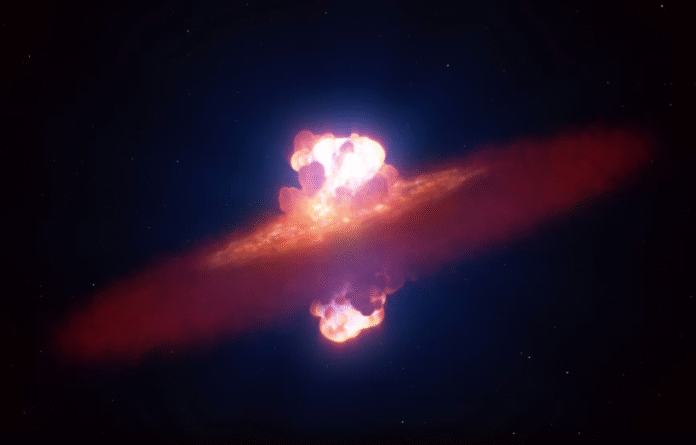Early stage of supernova explosion recorded for the first time
For the first time in history, an international team of astronomers has been able to record the so-called «breakthrough» phase of a supernova explosion - approximately 26 hours after the massive star began to collapse.
The object of observation is a star of about 15 solar masses that exploded in the galaxy NGC 3621 at a distance of about 22 million light-years.
Details of the study
According to the European Southern Observatory (ESO) and its Very Large Telescope (VLT), an emergency observation mode was activated after the star exploded, which allowed data to be collected at an early stage.
The analysis showed that the explosion was not perfectly spherical, as previously thought, but was asymmetrical - the shape of the explosion resembled an «olive» or a vertically stretched disc.
The scientists found that there was a gas and dust disc around the star along the equator, which affected the shape of the explosion and the distribution of the material.
Context.
A core-collapse supernova explosion is one of the most powerful events in the Universe - when a massive star collapses after exhausting its fuel reserves, and then its shells fly apart at high speeds.
Previous models predicted that explosions of this type are almost spherical; the new observation suggests that the shape may be much more complex. This fact may affect the understanding of the formation of neutron stars and black holes after supernovae.
Such early observations of supernovae provide a unique opportunity to «look into» the moment of a star's destruction and study how material and energy disperse in the early minutes and hours after the explosion.




